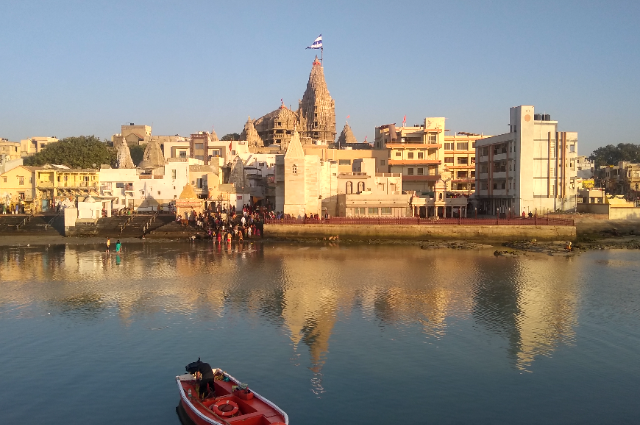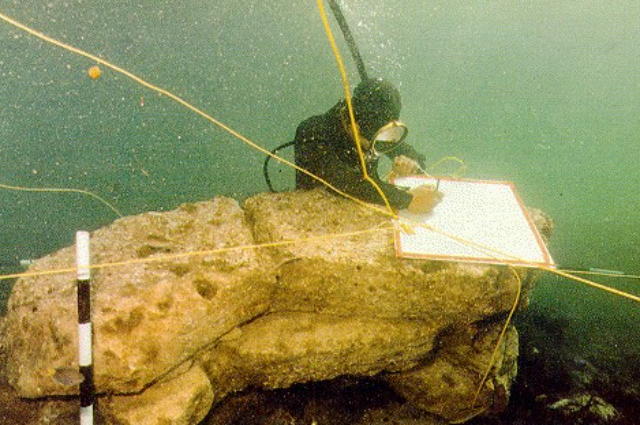One of India's seven sacred pilgrimage sites, Dwarka, is important from both an archaeological and theological perspective. Situated in Gujarat state at the westernmost point of the Saurashtra peninsula, Dwarka holds significant religious value as one of the four main holy sites. This place is considered as ancient kingdom of Krishna, which is mentioned in the holy Indian epic Mahabharata, was a walled city spanning over 84 km at the confluence of the Gomti River and the Arabian Sea.
In this article, we will try to focus on the mysteries of Dwarka, which is evidence of how advanced the ancient civilization of India was. The historical and archeological context of this historic city is obscure. Archaeologists and historians are searching for proof that the magnificent kingdom of Krishna, the vanished city of Dwarka, ever existed.
The ancient Mahabharata epic contains the most well-known legend regarding the lost city of Dwarka. Similar to Atlantis, Dwarka is supposed to have submerged under the ocean at some point in the far past. But in contrast to Atlantis, whose ruins have never been unearthed, there may be traces of this ancient country down below. The mythological belief is that the city of Dwaraka was established in reaction to Jarasandha, the emperor of Magadha, who was persistently invading Mathura, according to the holy book Srimad Bhagavatam. Lord Krishna made the decision to create a distinct city on the western coast of India in order to stop additional attacks on his clan. This idea came to life thanks to the renowned architect Vishwakarma. Classical scriptures state that Krishna erected Dwarka close to a location known as Kushasthali. Situated in about 900 palaces, the city swiftly gained importance and became the irreversible center of Lord Krishna's mission, housing thousands of people. The only way to get to the strongly defended city was via ship. A topic of conversation and a source of astonishment for people all across the world was the lost city of Dwarka. It is said that the Kali age started on the day Lord Krishna left Earth to join the spiritual world after 125 years, according to the Mahabharata's 23rd and 34th stanzas. The city was then flooded and drowned by the Arabian Sea. The god of the sea regained the ground, destroying Dwarka, the lost city, but leaving Lord Krishna's palace intact. Additionally, it is stated that the flying machine Vimana attacked the vanished city of Dwarka.
The first excavations were conducted in the 1930s, almost a century ago, on the island of Bet Dwarka, which is situated in Gujarat's Jamnagar district about 30 kilometers north of the city of Dwarka today. In the 1960s, more excavations were conducted, but no conclusive findings were found. An additional excavation was carried out in 1979 by the Archeological Survey of India. In the process, the excavator found pottery that was made in the second millennium BC.
There was a structure that looked like a reinforced foundation that archaeologists found. This implies that between 1983 and 1990, the old city walls had to have been constructed along the riverbanks. The location yielded more than five hundred antiques. The 2000-year cultural succession is well established by a few samples and date components. There have been finds of irrigation systems, pillars, and stone blocks, though there is some disagreement regarding when these were made.
The process of underwater exploration started with excavation close to the present-day Dwarkadhish temple, according to Dr. Rajiv Nigam, a former chief scientist of the Council of Scientific and Industrial Research-National Institute of Oceanography. In the thirteenth and fifteenth centuries BCE, the Dwarka mandir was constructed. An extensive excavation was completed in 2007 after renowned Indian archaeologist Dr. S R Rao carried out an offshore survey to search for evidence of the sunken metropolis. He clarified that Dwarka's position in modern-day Gujarat, on the westernmost tip of India, matches the one stated in recorded history.
One idea holds that the lost city of Dwarka was submerged under water when sea levels rose, having been built on reclaimed land about 3500 years ago. Studies conducted by scientists have shown that the area's sea level has fluctuated greatly until stabilizing around 1000 CE. The causes of these shifting sea levels could range from coastal erosion to geological upheavals.
This is where a large number of anchors were found during the underwater archaeology at Dwarka. It said that Dwarka was an ancient harbor beneath the sea. It must have been involved in trade between Indian and Arabic countries between the fifteenth and eighteenth centuries, according to history, and the harbor area was once used for vessel anchoring. The Sanskrit name "Dwarka" means "door" or "portal," suggesting this historic port city. It might have been a port of entry for foreign sailors visiting India. Now, archaeologists are getting ready for an underwater excavation to find the remains of the old city walls.
In Dwarka, an area of about 9,80,000 square meters was surveyed off the Samudra Narayana Temple, with water depths ranging from 3 to 12 meters. Eight zones of in-depth research were covered by the diving operations that were conducted in different sites. The key discoveries were primarily captured by underwater videography, still photos, and underwater sketches. Sextants were used to determine the items' positions. For surveying objectives, geophysical survey equipment is also utilized in Dwarka seas.
The discovery of Late Indus seals with three-headed animals and earthen vessels engraved in Indus-Brahmi characters during the 1500 B.C. transition period was made during onshore explorations near Bet Dwarka. Additionally, a significant amount of pottery resembling lustrous Red Ware bowls, Red Ware dishes, dish-on-stands, perforated jars, and incurved bowls dating to 1600-1500 B.C. was found in Dwarka, Rangpur, and Prabhas.
During the inquiry, scientists also discovered a large, readily visible man-made wall that measured around 550 meters. The wall was discovered during low tide. Experts in oceanology assert that a section of the area currently under water near Bet-Dwarka was buried at a later time, but not concurrently with the main Dwarka city.
Due to the area's close proximity to the coast, studies revealed that there have been indications of recent construction there, dating as recently as 3500–1500 BC, which is comparable to the late Harappan civilization. The major Dwarka city is still submerged in the sea, two or three kilometers down. This is thought to be the location from which Lord Krishna ruled his realm. The carbon dating of the items discovered here indicates that it is approximately 7500–9000 years old and was submerged by a tsunami that occurred 5000 years ago.
Archaeological excavations have uncovered numerous large stone constructions with semicircular, rectangular, and square shapes. In addition to these large stone constructions, there were also large sandstone walls and thoughtfully designed architectural features. There were additional stone anchors and road constructions discovered. Friends, consider this: All of these items were discovered within 7-9 miles of one other, providing ample evidence that Dwarka was a bustling port in addition to a well-established city.Numerous copper bells and containers that may have been utilized for religious purposes in the past were discovered by scientists. Additionally, near Dwarka, scientists discovered some odd iron constructions. These have been submitted to a lab for additional investigation. Even after all of this, a large number of artifacts and objects remain submerged, and they may be the subject of more research.
The world is keen to learn the whole truth about Dwarka, but it still doesn't know it yet.
The submerged remains of Dwarka are a great proof that how old was the Indian civilization and the port of Dwarka shows how advanced ancient Indian archaeology and engineering was. The world is still unaware of the mystery of a city being mentioned in a 1000 year old book and the remains of which are discovered underwater. More detailed archaeological surveys will bring light to more evidence of the existence of this mysterious historical city.
I will conclude this article with words of the First U.S president George Washington which states:
“Truth will ultimately prevail where there are plans taken to bring it to light.”


